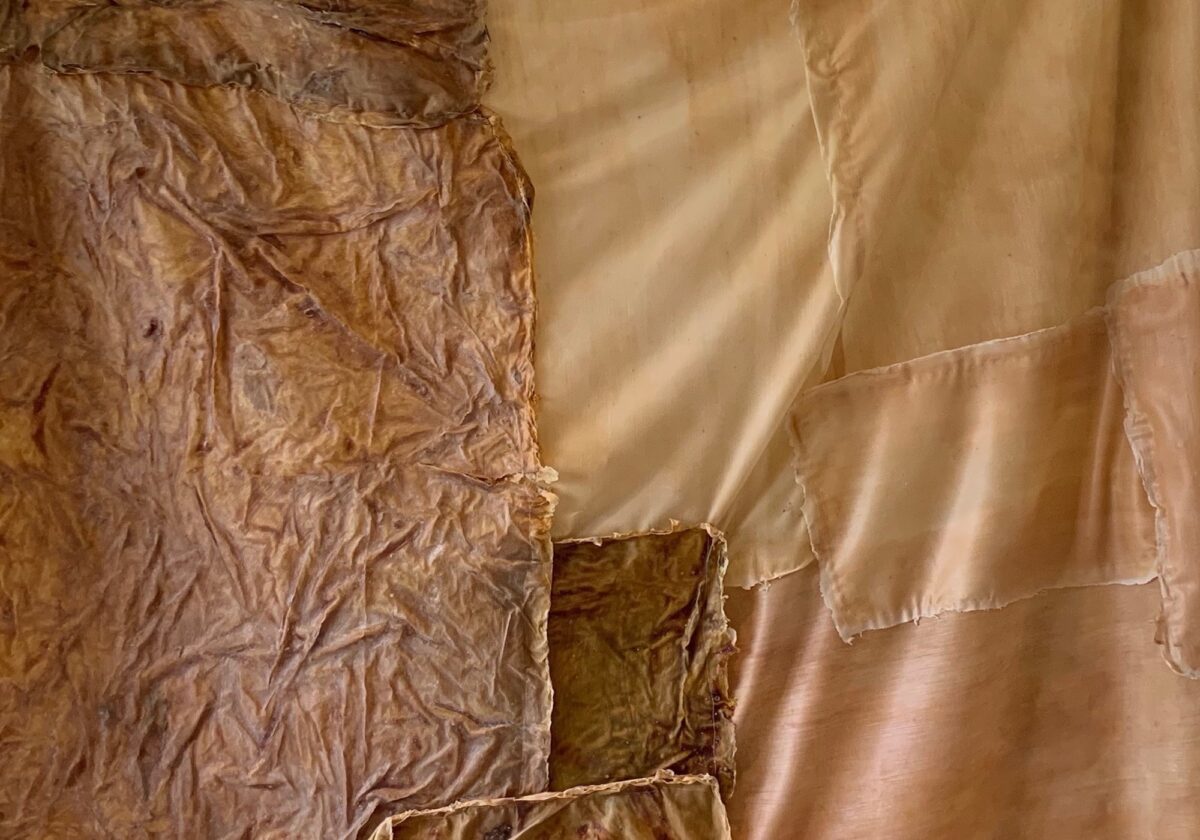
Untitled, embroidered latex, pieces life-size to corresponding body parts
I am interested in the body’s relationship with time: life, death, decay, and how we view our own mortality. Here, latex ‘skin’ represents this in two contrasting states. Steven Connor’s Book of Skin introduced me to the two concepts ‘cutis’ and ‘pellis’, which refer to living and dead skin, respectively. I visited Body Worlds and The Wellcome Collection to get a better idea of anatomy and watched films such as Under the Skin and Silence of the Lambs where skin is used in a perverse and unnerving way. Throughout the last year, I’ve mainly worked sculpturally, working with similar themes and focusing on experimenting with liquid latex, plaster, casting and embroidery. The main challenge with this project was how to take it beyond making the physical latex ‘skins’ – I discovered that their interest lies in their relationship to the living body. I was hoping to show this relationship through an interactive exhibition setting, taking advantage of the tactile nature of the latex, but instead moved towards performance and film while having to work from home. For the final videos, I sewed together the skins I had made, the ‘cutis’ on one side and the ‘pellis’ on the other, to create a large patchwork which could fully cover the body. My body isn’t visible at any point in the first video, so the latex skin almost appears to be moving by itself. In doing this I was hoping to achieve something Uncanny and uncomfortable to watch. I would like to continue exploring sculptural materials and processes to accompany, relate to, or perverse the human figure. During the course I’ve learnt not to work within one specific medium, and instead to see my practice as open-ended. This has been helped through learning new technical skills and being in a multidisciplinary creative environment.

Untitled, 35mm film photograph
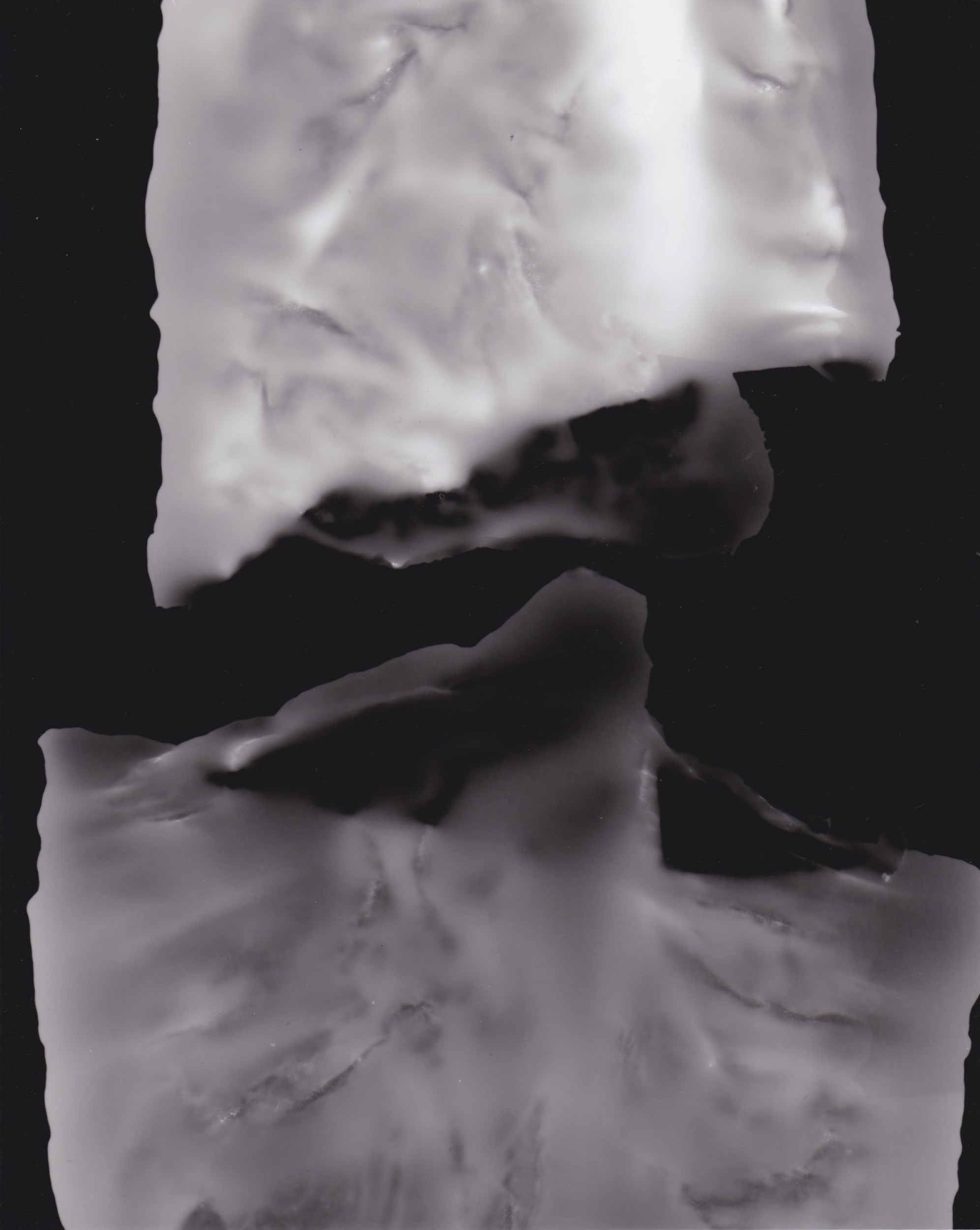
Untitled, photogram
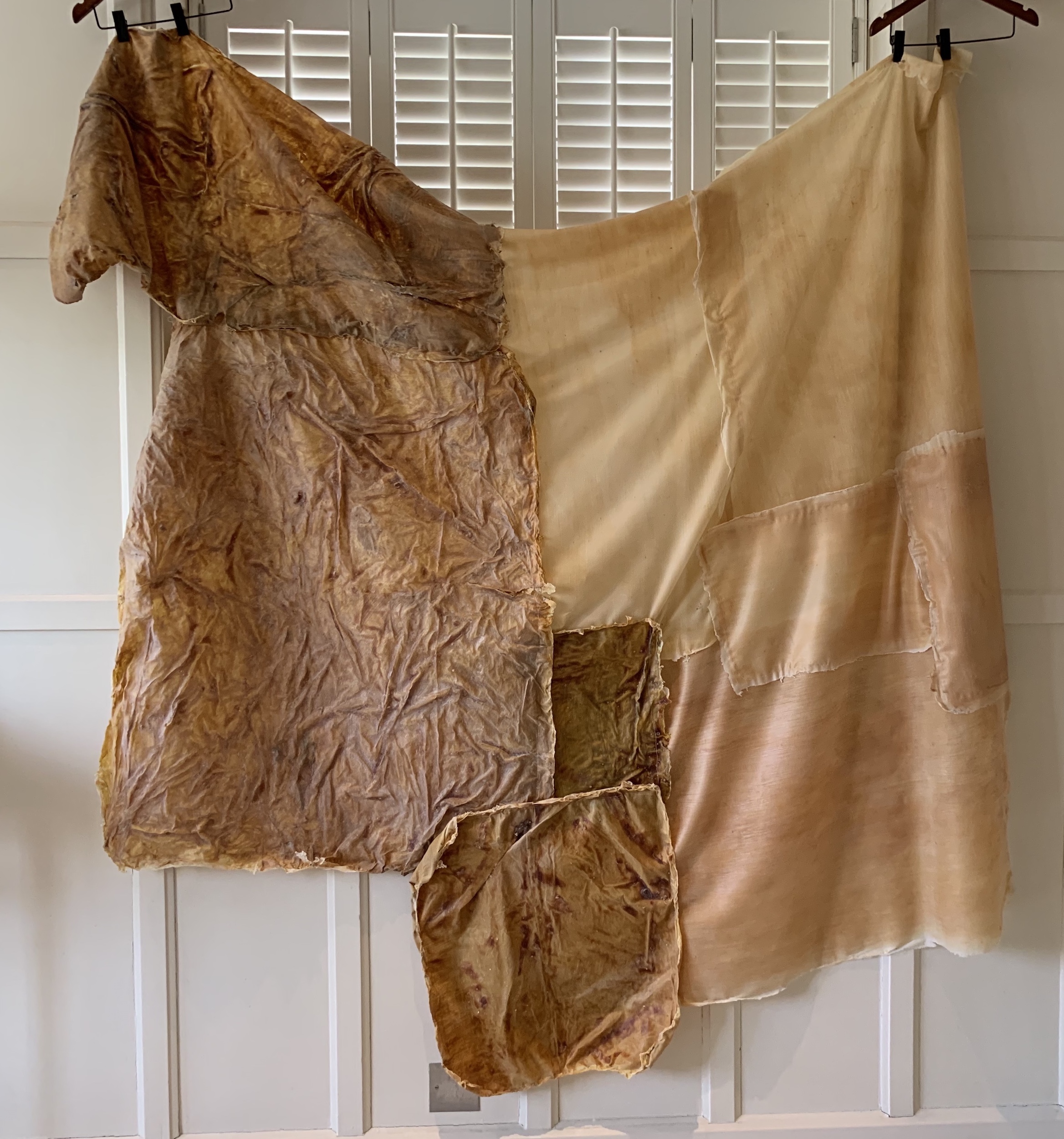
Untitled, latex sheets sewn together.
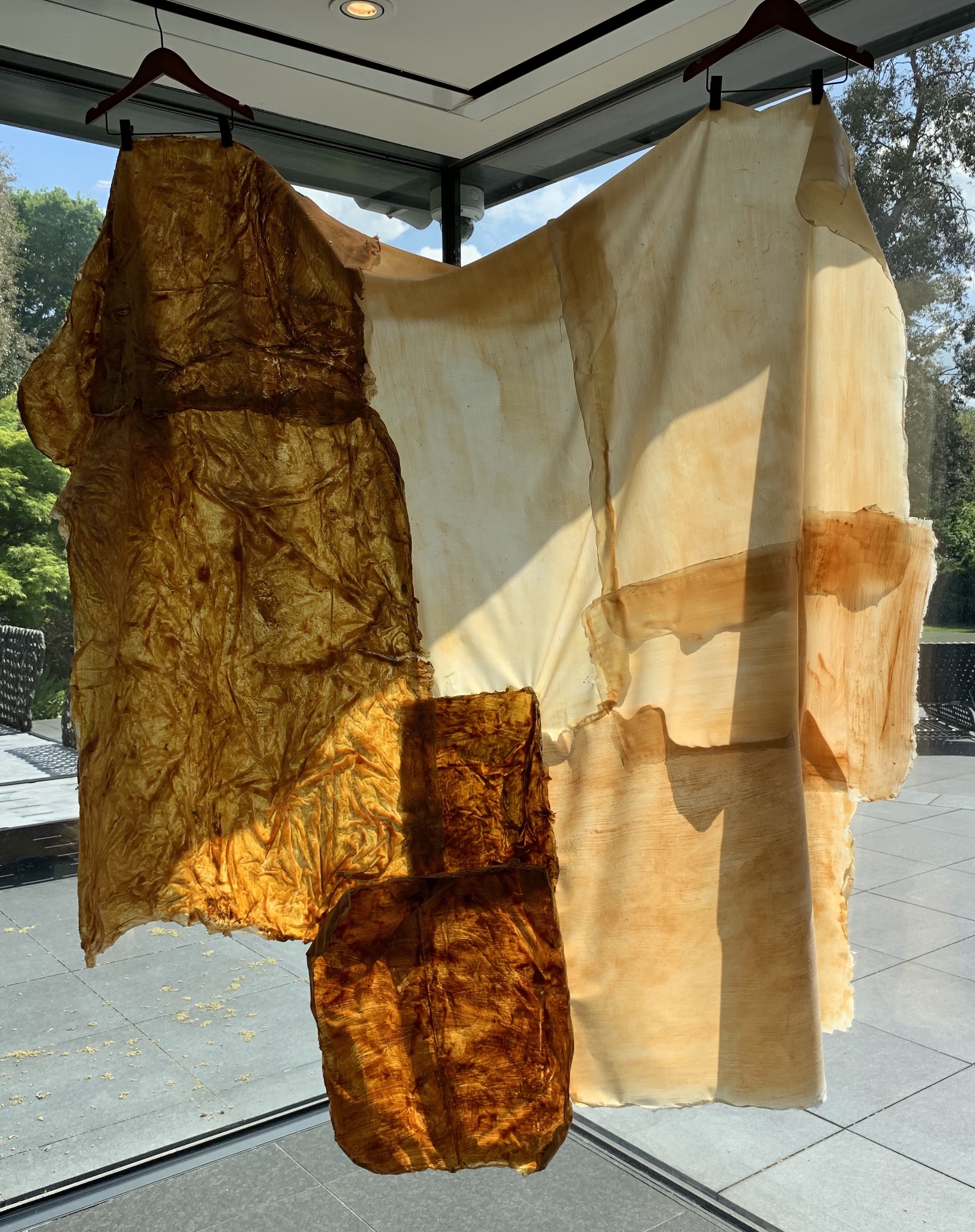
Untitled, latex sheets sewn together.
Untitled, video, 1 minute 40 seconds
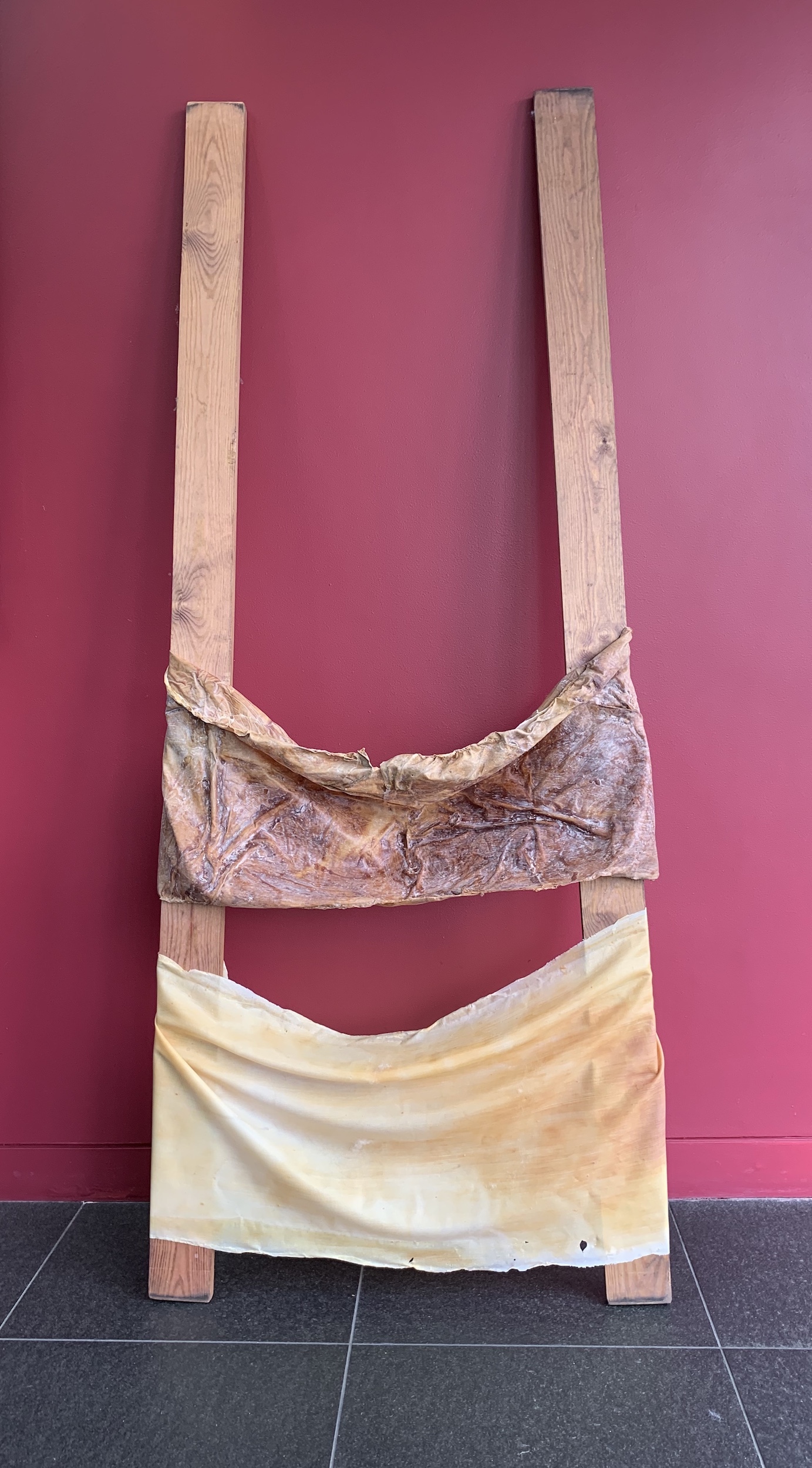
Untitled, latex sheets and wood.
Links

Untitled, embroidered latex, pieces life-size to corresponding body parts
I am interested in the body’s relationship with time: life, death, decay, and how we view our own mortality. Here, latex ‘skin’ represents this in two contrasting states. Steven Connor’s Book of Skin introduced me to the two concepts ‘cutis’ and ‘pellis’, which refer to living and dead skin, respectively. I visited Body Worlds and The Wellcome Collection to get a better idea of anatomy and watched films such as Under the Skin and Silence of the Lambs where skin is used in a perverse and unnerving way. Throughout the last year, I’ve mainly worked sculpturally, working with similar themes and focusing on experimenting with liquid latex, plaster, casting and embroidery. The main challenge with this project was how to take it beyond making the physical latex ‘skins’ – I discovered that their interest lies in their relationship to the living body. I was hoping to show this relationship through an interactive exhibition setting, taking advantage of the tactile nature of the latex, but instead moved towards performance and film while having to work from home. For the final videos, I sewed together the skins I had made, the ‘cutis’ on one side and the ‘pellis’ on the other, to create a large patchwork which could fully cover the body. My body isn’t visible at any point in the first video, so the latex skin almost appears to be moving by itself. In doing this I was hoping to achieve something Uncanny and uncomfortable to watch. I would like to continue exploring sculptural materials and processes to accompany, relate to, or perverse the human figure. During the course I’ve learnt not to work within one specific medium, and instead to see my practice as open-ended. This has been helped through learning new technical skills and being in a multidisciplinary creative environment.

Untitled, 35mm film photograph

Untitled, photogram

Untitled, latex sheets sewn together.

Untitled, latex sheets sewn together.
Untitled, video, 1 minute 40 seconds

Untitled, latex sheets and wood.
Links
